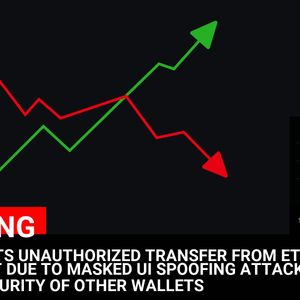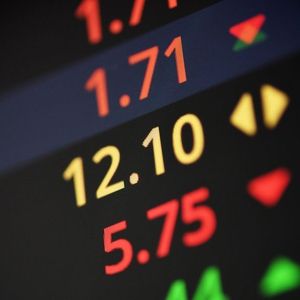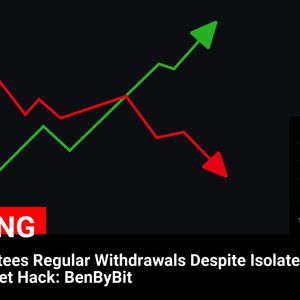For cryptocurrency enthusiasts and investors tracking global financial shifts, understanding movements in traditional markets is crucial. Today’s spotlight is on China’s central bank, the People’s Bank of China (PBOC), and its latest fixing of the USD/CNY reference rate . This seemingly minor adjustment carries significant weight, influencing not just the Chinese Yuan (CNY) but potentially broader market sentiment. Let’s dive into what this latest PBOC decision means and why it matters in the context of the global financial landscape. What is the Significance of the PBOC’s USD/CNY Reference Rate Setting? The PBOC , as China’s central bank , plays a pivotal role in managing the nation’s currency, the Chinese Yuan . One of its key tools is setting the daily USD/CNY reference rate . This rate, announced each morning, dictates the central parity around which the Yuan can trade against the US dollar in the onshore market. Think of it as an anchor for the day’s trading, influencing market expectations and currency movements. On Tuesday, the PBOC set the USD/CNY reference rate at 7.1697, a slight adjustment from the previous fix of 7.1702. While seemingly a small change, these daily adjustments are closely watched by traders and economists globally. Why? Signal of Intent: The reference rate provides a signal of the PBOC’s stance on the Yuan’s value. A stronger fix (lower USD/CNY rate) can indicate a desire to support the Yuan, while a weaker fix (higher USD/CNY rate) might suggest a more neutral or easing stance. Market Guidance: It helps guide market expectations for the Yuan’s daily trading range. Although the onshore Yuan can fluctuate within a permitted band around this rate, the fix acts as a powerful psychological and practical benchmark. Economic Stability: By managing the USD/CNY reference rate , the PBOC aims to maintain exchange rate stability, a key objective for economic stability in China. PBOC FAQs: Decoding China’s Central Bank Actions To better understand the context of this rate setting, let’s address some frequently asked questions about the PBOC and its operations: Question Answer What does the People’s Bank of China do? The primary goals of the PBOC are to maintain price stability, including exchange rate stability, and to foster economic growth. It also focuses on financial reforms and market development. Who controls the PBOC? The PBOC is state-owned and thus not fully autonomous. The Chinese Communist Party (CCP) plays a significant role in its management and direction. What policy tools does the PBOC use? Unlike many Western central banks, the PBOC employs a broad range of tools, including: Seven-day Reverse Repo Rate (RRR) Medium-term Lending Facility (MLF) Foreign exchange interventions Reserve Requirement Ratio (RRR) Loan Prime Rate (LPR) – China’s benchmark interest rate Are private banks allowed in China? Yes, China has a limited number of private banks, including digital lenders like WeBank and MYbank, backed by major tech companies. Why This Matters for the Chinese Yuan (CNY) and Beyond The subtle shift in the USD/CNY reference rate to 7.1697 reflects the PBOC’s ongoing management of the Chinese Yuan . In comparison to Reuters’ estimates of 7.2538, the set rate is notably stronger, suggesting a controlled approach to the Yuan’s valuation. This is particularly relevant given global economic uncertainties and currency fluctuations. For cryptocurrency investors, monitoring these traditional financial indicators is vital. Currency strength and stability, especially for major economies like China, can influence broader market sentiment and risk appetite. A stable or strengthening Chinese Yuan , guided by the PBOC’s measured approach to the USD/CNY reference rate , can contribute to a more predictable global financial environment, which indirectly impacts the cryptocurrency markets as well. Actionable Insights Stay Informed: Keep an eye on daily USD/CNY reference rate fixings by the PBOC as indicators of potential shifts in China’s currency policy. Understand the Tools: Familiarize yourself with the PBOC’s policy tools beyond just interest rates, such as the RRR and MLF, to grasp their broader influence. Global Context: Recognize that China’s central bank actions, including USD/CNY reference rate settings, are part of a complex global economic interplay that can have ripple effects across all markets, including crypto. In Conclusion: The PBOC’s Steady Hand on the Yuan The PBOC’s latest USD/CNY reference rate adjustment, though incremental, is a testament to its active management of the Chinese Yuan . By carefully setting this daily benchmark, China’s central bank aims to foster stability and guide market expectations. For those navigating the volatile world of cryptocurrencies, understanding these traditional financial mechanisms offers valuable context and a broader perspective on global economic currents. The PBOC’s actions, while focused on the Chinese Yuan , resonate throughout the financial world, reminding us of the interconnectedness of global markets. To learn more about the latest Forex market trends, explore our article on key developments shaping US Dollar liquidity.



















